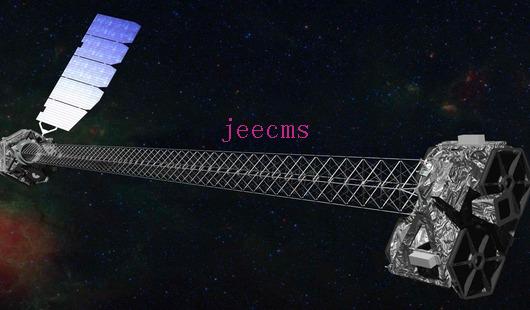Insight-HXMT detected a very bright X-ray burst from SGR J1935+2154. This X-ray burst was also detected by the European satellite INTEGRALwhich is a magnetar in our Milky Way.Insight-HXMT is the first to identify the double-spike structure of this X-ray burst as the high energy counterpart of FRB 200428. This discoverythus proving that both the X-ray burst and FRB 200428 originated from magnetar SGR J1935+2154. This represents not only the first confirmed source of an FRBThe latest observations
The Special Issue Performance and Early Results of China’s 1st X-ray Astronomy Satellite Insight-HXMT is now complete and available electronically on ScienceDirect.

The Insight-HXMT team thanks the kind greeting from the NuSTAR science community and appreciates very much the many joint observations on black holes and neutron stars with NuSTAR and Insight-HXMT. Together, let's do more and better science!
Satellite orbit has been determined autonomously within 10 km (3σ) by observing an X-ray pulsar with the Hard X-ray Modulation Telescope (Insight-HXMT) satellite, according to a study by Chinese scientists just published in the Astrophysical Journal Supplement.
China’s first X-ray astronomy satellite, the Hard X-ray Modulation Telescope (HXMT), also known as Insight, completed its five-month period of in-orbit calibration and test observations and was officially handed over to the Institute of High Energy Physics (IHEP) for science operation on January 30th, 2018.
HXMT will perform an all-sky broad band X-ray survey and pointed observations. In the surveywhile in the pointed observations some black holes and neutron stars will be studied in details.The HXMT project was officially approved in 2011 and will be launched in two years from now. As the scientific user of HXMTabout one thousand hard X-ray sources can be detectedthe Institute of High Energy Physics leads the development of the payloads and the construction of the scientific ground segments. The C
HXMT satellite has been launched succesefully at 11 a.m. on June 15 from Jiuquan, China.
the review board concluded that all the functions and ports meet with the design requirements. This marks the completion of all research and development work on the payload. The HXMT satellite is planned to launch at the end of this year from the Jiuquan satellite launch center.The Institute of High Energy Physics (IHEP) is leading the development of the HXMT project as China’s first X-ray astronomical satellite. Based on their innovative direct demodulation image reconstruction methodThe payloa
The Workshop on Hard X-ray Modulator Telescope (HXMT) was successfully held at IHEP on April 24th2015. More than 40 experts from home and abroad attended the workshop.The workshop discussed the payload and calibration status of HXMT. The experts spoke highly of the team efforts on the work of ground calibrationsD and calibration work of HXMT.and put forward valuable suggestions on the orbit calibrations as well. Agreement was also achieved on the cross calibrations and the relevant studies.The w
the ESAC scientists delivered 22 talks covering a wide range of science operations and calibration of ESA astronomic satellitesthe workshop aimed to optimize the Hard X-ray Modulation Telescope (HXMT) Project based on the needs of instrument calibration and science operations. China has not launched any space astronomic satellite yetthe European Space Astronomy Centre (ESAC) and its member nations gathered in Madrid from March 7th to 8th to participate in the China-ESAC astronomic satellite ins
and HXMT prototypes. The experts were fully convinced that IHEP would be capable to finish the job and achieve the fixed targets of the project.experts visit the newly-built commissioning hall for HXMT payloadsthe newly-built commissioning hall for HXMT payloadsincluding measures to control the quality of the instruments and software. The experts made inquires about the scientific significance of the projectthe reliability and performance are the top priority. The HXMT researchers reported to t
